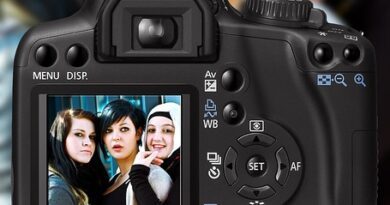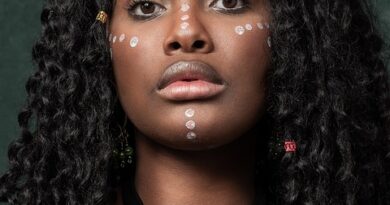Exploring the Evolution of American Women’s Fashion Through Decades
Exploring the Evolution of American Women’s Fashion Through Decades
Fashion has always been a way for people to express themselves and communicate their cultural values. Through the years, American women’s fashion has evolved drastically, mirroring the social, economic, and political changes of the times. From the 1920s flapper dresses to the power suits of the 1980s, each decade brought its own unique styles and trends that continue to shape the fashion industry today.
The 1920s, often referred to as the Roaring Twenties, marked a significant shift in women’s fashion. This era was characterized by a rebellion against traditional gender roles and a desire for liberation and freedom. Women ditched their corsets and embraced a more relaxed silhouette, opting for loose-fitting and shapeless garments. The iconic flapper dresses became popular, featuring dropped waistlines, shorter hemlines, and plenty of fringe details. The flappers became a symbol of modernity, confidence, and the changing status of women in society.
As the 1930s rolled in, the Great Depression brought economic hardships that affected the fashion choices of American women. Practicality and simplicity replaced the lavishness of the previous decade. Silhouettes became more form-fitting, emphasizing the natural curves of the body, while hemlines remained long. Women favored more affordable fabrics like rayon, and accessories were kept to a minimum. Overall, the fashion of this era reflected the somber mood and austerity measures necessitated by the times.
The 1940s were heavily influenced by World War II, as women took on jobs and actively participated in the war effort. Functionality and practicality were of utmost importance, leading to the rise of the iconic Rosie the Riveter image. Women wore pants and overalls, workwear essential for their newfound roles in factories and offices. However, feminine fashion still prevailed outside of the workplace, with nipped-in waists, pleated skirts, and peplum jackets being popular choices. Despite the war-torn years, fashion continued to adapt and play a significant role in boosting morale and expressing patriotism.
The 1950s were characterized by a return to a more traditional and feminine aesthetic. The end of the war and the economic boom allowed for a renewed focus on glamour and luxury. Women embraced full skirts, cinched waists, and petticoats, emphasizing an hourglass figure. This decade saw the popularization of Christian Dior’s ‘New Look,’ an ultra-feminine silhouette that celebrated curves and emphasized femininity. Pastel colors and ruffles were also heavily embraced, offering a more romantic and delicate style compared to the practicality of previous years.
The 1960s brought about a cultural revolution that extended to fashion. The rise of youth culture, along with the increasing influence of music and film, helped shape the style of the decade. The early ’60s still held onto the feminine shapewear and modest hemlines of the previous decade, but as the era progressed, hemlines began to rise and clothing became more experimental. The introduction of the miniskirt by British designer Mary Quant challenged traditional fashion norms, and the influence of countercultural movements like the hippies and the mod culture further pushed boundaries, introducing bold patterns, bright colors, and unconventional silhouettes.
The 1970s marked the beginning of a more casual and relaxed approach to fashion. With the rise of the feminist movement, women sought comfort and equality in their clothing choices. Bell-bottom jeans, wide lapels, and platform shoes became synonymous with this decade, as women embraced a freer and more androgynous style. The disco era also took hold, introducing glamorous jumpsuits, metallic fabrics, and form-fitting dresses. The fashion of the ’70s significantly reflected the changing social dynamics and the strive towards equality.
The 1980s were marked by excess and power. Women in the workplace sought to command authority through their fashion choices, resulting in the rise of the power suit. Padded shoulders, bold prints, and oversized accessories became the norm, symbolizing strength and ambition. Additionally, aerobics and fitness culture influenced fashion, as seen in the popularity of neon colors, leg warmers, and spandex. The fashion of the ’80s reflected the assertiveness and confidence of women in a rapidly changing society.
The 1990s brought about a more relaxed and minimalist approach to fashion. Grunge and streetwear became popular, as women embraced oversized flannel shirts, ripped jeans, and combat boots. The fashion industry also saw the rise of supermodels like Kate Moss, who popularized a more natural and effortless look. As the decade progressed, the influence of hip-hop became more prominent, with women embracing baggy jeans, crop tops, and bold accessories. The fashion of the ’90s reflected a rebellious and nonchalant attitude towards dressing.
In recent years, the fashion industry has seen a resurgence of different trends from various decades. Vintage-inspired fashion has become increasingly popular, allowing women to embrace the styles of their predecessors while adding a modern twist. Fashion has become more inclusive, diverse, and sustainable, with the recognition that every woman deserves to feel confident and stylish, regardless of her body type, age, or background.
As we continue to navigate the ever-changing world of fashion, it is fascinating to look back and see how American women’s fashion has evolved through the decades. From the flapper dresses of the 1920s to the athleisure trend of the 2010s, fashion continues to reflect the values and aspirations of society. As women continue to break barriers and redefine what it means to be fashionable, one thing remains certain: fashion will always be a powerful tool for self-expression and empowerment.







